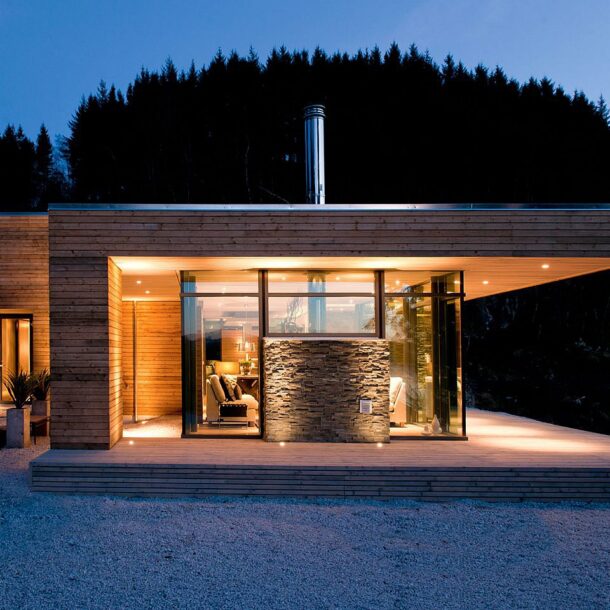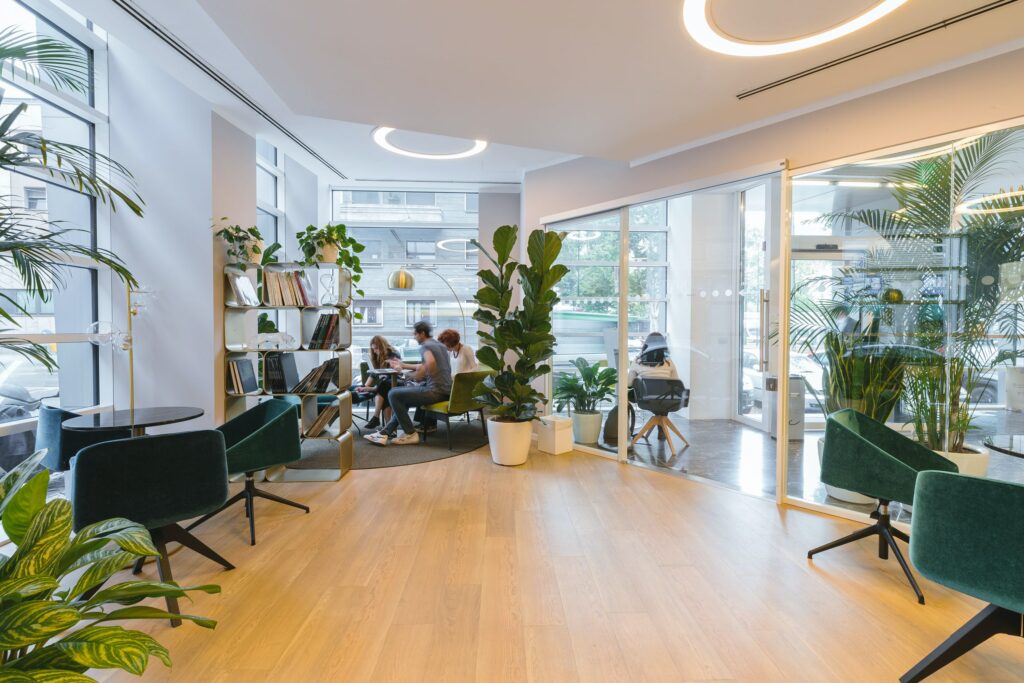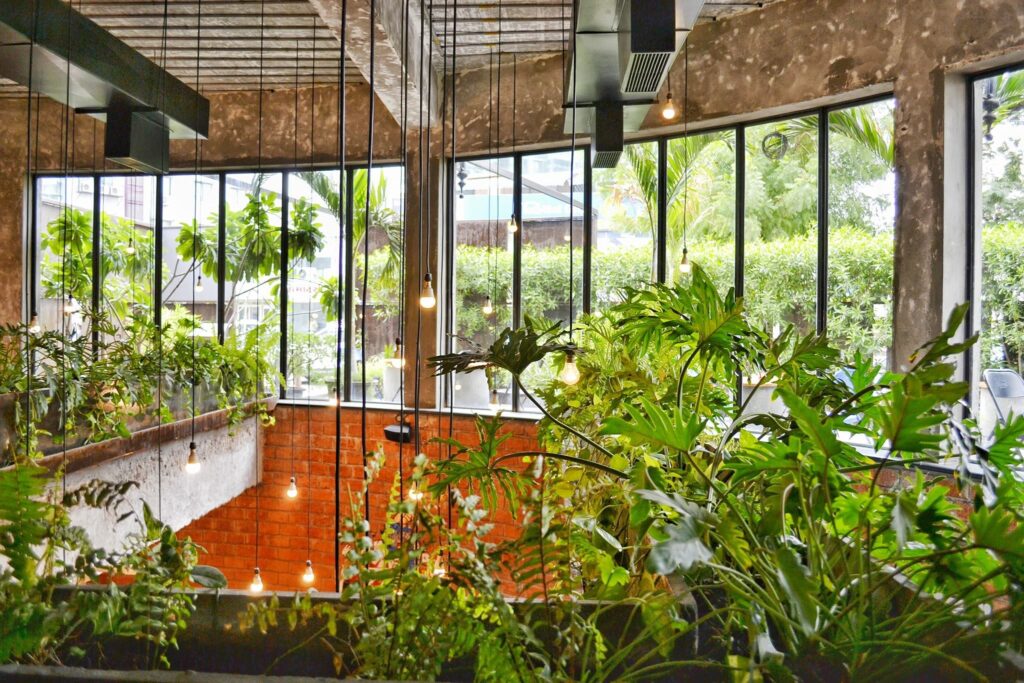
Categorias
- Architecture (2)
- Certifications (2)
- Climate Change (2)
- Energia (1)
- health (1)
- Modelação Termodinâmica (1)
- Sem categoria (1)
- Sustainability (3)
Etiquetas
Erica Asta – Sustainability Consultant Architect

In recent years, the increase in greenhouse gas emissions and the use of fossil fuels has led the European Union (EU) to adopt new targets to limit the energy consumption and environmental impact of all economic sectors. In the framework of the EU’s climate actions, in which long-term (2050) targets are defined, it is clear that the buildings sector plays a very important role. Indeed, the building sector in Europe is responsible for around 40% of energy consumption and 36% of greenhouse gas emissions [1] .
With a view to reducing the impact of buildings, a number of sustainability certification schemes (or protocols) have become widespread in recent years. Examples of these are LEED and BREEAM, created with the aim of certifying the sustainability and efficiency of buildings.
Alongside the focus on reducing the energy-environmental impact of buildings, the 2018 EPBD (Energy Performance of Buildings Directive) has placed the focus on occupants, with a human-centric approach, placing the human being at the center, to ensure the comfort and wellbeing of the building users. Furthermore, the topic has become even more prominent in the current international landscape, following the emergence of the spread of the SARS-Cov 2 virus, highlighting the importance of controlling the quality of indoor environments to safeguard people.
Studies show that 90% of our time is spent indoors and this can affect our health, well-being and productivity. In the building sector, there are various aspects that affect well-being. For example, causes can be identified in the use of untested materials, the use of equipment such as printers and computers, the quality of air and light (through natural openings that restrict the entry of both), and thermal comfort, among others. These affect physical well-being, while intellectual or emotional well-being can be influenced by the interior and exterior design of a building or its integration with nature. As an example of the effects that could occur, if adequate indoor well-being is not ensured, reference can be made to the Sick Building Syndrome (SBS) [2]. It concerns a range of health problems arising from the conditions of the indoor environment, be it an office or a residence. Symptoms include headaches, coughing, wheezing, and irritation of the eyes, nose, and throat. It is clear that this cause-and-effect relationship has a direct consequence on the well-being and productivity of the occupants. For this reason, in order to ensure adequate indoor comfort and user wellbeing, it is essential that buildings meet specific criteria to ensure a balance between objective and subjective aspects.
The WELL Building Standard protocol created in 2014 is managed by the International Well Building Institute (IWBI) and has been issued by the USGBC in the same way as the LEED protocol. It is in the above context that the WELL certification works and sets its goal to ensure optimal conditions for occupants in terms of overall comfort, well-being, and health. Currently, 20,832 projects are certified and rated, 13,609 projects are enrolled and in total there are 3.46 BILLION SQ FT of WELL projects across 111 countries. Greenlab is proud of being the first to submit a building, in Portugal, for pre-certification, in the design stage. At the moment of the article two buildings were submitted to this pre-certification and many others are in the process of pre-certification.

WELL, through 116 characteristics and 10 concepts (air, water, nourishment, light, movement, thermal comfort, sound, material, mind, and community), has become a guideline that aims to improve the quality of the spaces we live in, facilitate a good night’s sleep, support our mental health and help us improve the quality of our work. Going into more detail below is an analysis of each individual concept addressed by WELL:
AIR: According to The National Human Activity Pattern Survey (NHAPS) [3], people spend about 90 percent of their time indoors, such as in homes, offices, schools, or other building environments. Inhalation of indoor air pollutants can lead to a range of short-term and long-term negative health and well-being outcomes, which may include less severe symptoms such as headache, dry throat, eye irritation, or runny nose, while more serious health outcomes may include asthma attacks, infections with legionella bacteria and carbon monoxide poisoning [4],[5]. For these reasons, through various strategies including source elimination or reduction, active and passive building design, and management strategies, the WELL Air concept aims to achieve high levels of indoor air quality throughout a building’s lifetime.
WATER: Water is the main component of cells and almost two-thirds of the human body consists of water [6]. Depending on age, gender, and state of pregnancy, guidelines for water intake (which include water in food and direct consumption) recommend different values of water consumption per day as appropriate to compensate for what leaves the body through respiration, sweating, and excretion, and to promote the elimination of toxins, by-products, and other wastes. The WELL Water concept covers aspects of the quality, distribution, and control of liquid water in a building, as well as features aimed at water management to avoid damage to building materials and environmental conditions.
NOURISHMENT: Poor nutrition remains a major contributor to the global burden of disease, being responsible for more than one in five deaths globally [7] . Unhealthy diets pose a greater risk of morbidity and mortality than the use of drugs, alcohol, and tobacco combined, while healthy diets have the potential to nourish human health and prevent several diet-related diseases, including cardiovascular disease, hypertension, and diabetes. The concept of WELL Nourishment encourages the creation of food environments where the healthiest choice is the easiest by requiring the availability of fruit and vegetables and nutritional transparency.
LIGHT: Light is the main driver of the visual and circadian systems. Humans and animals have internal clocks that synchronize physiological functions on an approximately 24-hour cycle called the circadian rhythm. The circadian rhythm is synchronized with the natural day-night cycle through various environmental cues, the main one being light. Disruption or desynchronization of the circadian rhythm has been linked to obesity, diabetes, depression, and metabolic disorders [8],[9]. By promoting exposure to light, the WELL Light concept aims to create light environments that promote visual, mental, and biological health.
MOVEMENT: Today, we know that all movement is important for health and that physical activity can be accumulated throughout the day in a variety of ways [10]. Therefore, it is critical that our buildings, communities, and socio-cultural environments consider movement as a vital part of the human condition and as a key health promotion tool. With this in mind, the WELL Movement concept promotes physical activity in daily life through environmental design, policies, and specific programs.
THERMAL COMFORT: By replacing open spaces and vegetation with structures built with heat-trapping materials, a phenomenon known as the urban heat island has developed in the urban landscape[11]. This can lead to negative health outcomes, such as heat-related illnesses, fatigue, increased respiration, and heart rate [12],[13]. This characteristic of WELL Thermal Comfort requires projects to design outdoor spaces to avoid excessive wind and manage high temperatures through shading or other strategies.
SOUND: Only in recent years has it been determined that exposure to noise sources, such as traffic and transport, has been shown to impede people’s health and well-being in a variety of ways [14],[15]. For example, the effects of external noise from transport or industrial sources have been linked to sleep disturbances, hypertension, and reduced mental arithmetic abilities in school children [16],[17]. With this in mind, the WELL Sound concept, through the mitigation of acoustic comfort parameters that shape the built environment, aims to enhance the health and well-being of occupants.
MATERIALS: The concept of WELL materials requires that projects assess the presence of hazardous compounds such as lead, asbestos, and mercury and that measures are taken to prevent human exposure. In addition, testing, remediation, and redevelopment of sites contaminated with these and many other toxic pollutants are encouraged to support environmentally responsible growth and prevent urban sprawl [18]. The aim of the WELL Materials concept is to reduce human exposure, either directly or through environmental contamination, to chemicals that can impact health during the construction, renovation, furnishing, and operation of buildings.
MIND: Mental health is not simply the absence of a mental health condition. Rather, it is a state of well-being, in which individuals can live to their fullest potential, cope with the normal stresses of life, work productively and contribute to their community [19]. In addition, mental health is characterized by a range of socioeconomic, biological, and environmental factors, such as work conditions, lifestyle, and health behaviors. In this way, the WELL Mind concept promotes mental health by addressing the diverse factors that influence cognitive and emotional well-being.
COMMUNITY: Within each built space there is a unique community of people with different characteristics, bound by social ties, who share common perspectives and engage in common actions and experiences in shared environments or places [20] . Global, national and local conditions that impact each individual’s health in a community can influence health inequalities, i.e. differences in health status between population groups that result from an unequal distribution of power and resources based on gender, race, ethnicity, or socio-economic status [21]. Therefore, the WELL Community concept aims to support access to essential health care, build a culture of health that takes into account the diverse needs of the population, and create an inclusive and engaged community of occupants.

In conclusion, the effects that a building can have are varied and can be summarized in two macro groups:
To this end, at Greenlab we provide consultancy on sustainability in the following ways. In line with the objectives of each certification, LEED and BREEAM are applied to various projects to identify the effects that a building has, with greater focus, on the external environment, while WELL certification targets its assessment to ensure healthy indoor spaces.
In this regard, in addition to the study of the project, the consultancy is provided to comply with the certification requirements, the identification of objectives in agreement with the client, and the respective analyses required by the protocol, thermodynamic simulations are run (Ferramentas para o futuro – Green Lab) to ensure adequate thermal comfort in the interior spaces. Moreover, it is our task to ensure that the credits of the respective certifications are met and exceeded.
We aim to share the importance of building responsibly and sustainably for our future. For this reason, we have a qualified team of architects and engineers that allows the client to be accompanied at all stages, from day 0 to the day of certification.
[1] Commissione Europea, In focus: Energy efficiency in buildings, 2020. [Online]. Available: https://ec.europa.eu/info/news/focus-energy-efficiency-buildings-2020-feb-17_en. Last consultation date 05/04/2022.
[2] Al Horr, Y., Arif, M., Katafygiotou, M., Mazroei, A., Kaushik, A., Elsarrag, E., «Impact of indoor environmental quality on occupant well-being and comfort: a review of the literature. Int. J. Sustain. Built Environment,» 2016.
[3] Klepeis NE, Nelson WC, Ott WR, et al. The National Human Activity Pattern Survey (NHAPS): A resource for assessing exposure to environmental pollutants. J Expo Anal Environ Epidemiol. 2001;11(3):231-252. doi:10.1038/sj.jea.7500165
[4] Joshi S. The sick building syndrome. Indian J Occup Environ Med. 2008;12(2):61. doi:10.4103/0019-5278.43262
[5] U.S. Environmental Protection Agency. Indoor Air Pollution: An Introduction for Health Professionals. https://www.epa.gov/indoor-air-quality-iaq/indoor-air-pollution-introduction-health-professionals.
[6] Institute of Medicine. Dietary Reference Intakes for Water, Potassium, Sodium, Chloride, and Sulfate. Washington, DC: The National Academies Press; 2005
[7] (Afshin A, Sur PJ, Fay KA, et al. Health effects of dietary risks in 195 countries, 1990–2017: a systematic analysis for the Global Burden of Disease Study 2017. Lancet. 2019;393(10184):1958-1972. doi:10.1016/S0140-6736(19)30041-8)
[8] Cho Y, Ryu S-H, Lee BR, Kim KH, Lee E, Choi J. Effects of artificial light at night on human health: A literature review of observational and experimental studies applied to exposure assessment. Chronobiol Int. 2015;32(9):1294-1310. doi:10.3109/07420528.2015.1073158
[9] Germain A, Kupfer DJ. Circadian rhythm disturbances in depression. Hum Psychopharmacol. 2008;23(7):571-585. doi:10.1002/hup.964
[10] King AC, Powell KE, Physical Activity Guidelines Advisory Committee, Committee PAGA. 2018 Physical Activity Guidelines Advisory Committee Scientific Report. 2018. https://health.gov/paguidelines/second-edition/report.aspx
[11] UCAR Center for Science Education. Urban Heat Islands | UCAR Center for Science Education
[12] Environmental Protection Agency. Heat Island Cooling Strategies | Heat Island Effect | US EPA
[13] Zhang L, Wei D, Hou Y, et al. Outdoor Thermal Comfort of Urban Park—A Case Study. Sustainability. 2020;12(5):1961. doi:10.3390/su12051961
[14] Hänninen O, Knol A. European Perspective on Environmental Burden of Disease–Estimates for Nine Stressors in Six European Countries. Natl Inst Heal Welfare Rep. 2011:95.
[15] Lamb S, Kwok KCS. A longitudinal investigation of work environment stressors on the performance and wellbeing of office workers. Appl Ergon. 2016;52:104-111. doi:10.1016/j.apergo.2015.07.010
[16] (Fyhri A, Aasvang GM. Noise, sleep and poor health: Modeling the relationship between road traffic noise and cardiovascular problems. Sci Total Environ. 2010;408(21):4935-4942. doi:10.1016/j.scitotenv.2010.06.057
[17] Babisch W. Updated exposure-response relationship between road traffic noise and coronary heart diseases: A meta-analysis. Noise Heal. 2014;16(68):1. doi:10.4103/1463-1741.127847)
[18] (Science Communication Unit. Brownfield Regeneration. In: University of the West of England (UWE), ed. Science for Environment Policy. Vol 39. Bristol 2013: https://ec.europa.eu/environment/integration/research/newsalert/pdf/39si_en.pdf).
[19] World Health Organization. Mental health: strengthening our response. WHO. http://www.who.int/mediacentre/factsheets/fs220/en/. Published 2016. Accessed January 11, 2018
[20] MacQueen KM, McLellan E, Metzger DS, et al. What is community? An evidence-based definition for participatory public health. Am J Public Health. 2001;91(12):1929-1938. doi:10.2105/AJPH.91.12.1929
[21] World Health Organization. About social determinants of health. http://www.who.int/social_determinants/sdh_definition/en/. Published 2017. Accessed January 30, 2018
Rua 3 da Matinha – Bloco 1, Loja F
1950-326 Lisboa – Portugal
Tel: +351 213 879 414
“Embracing a Sustainable World”

